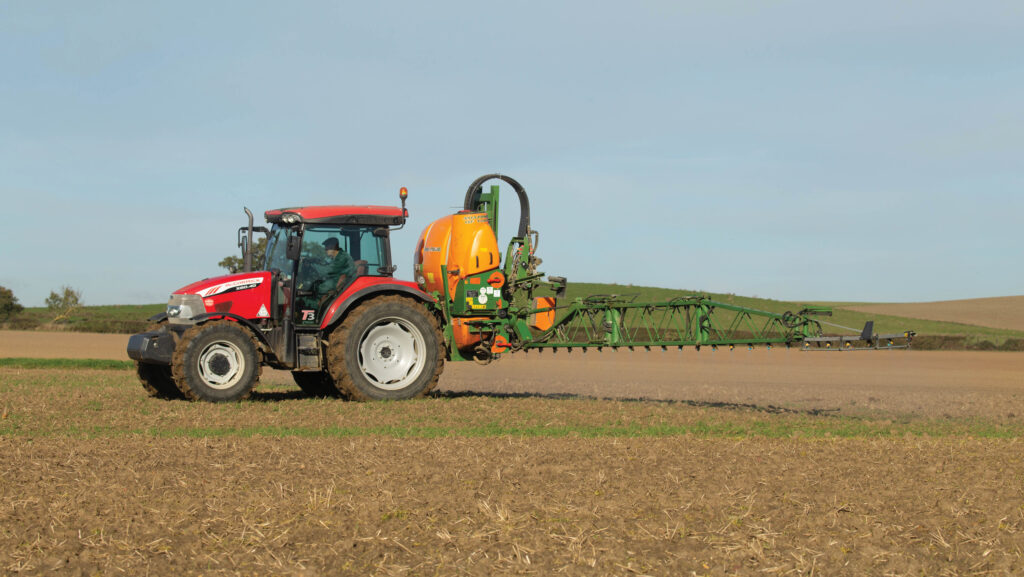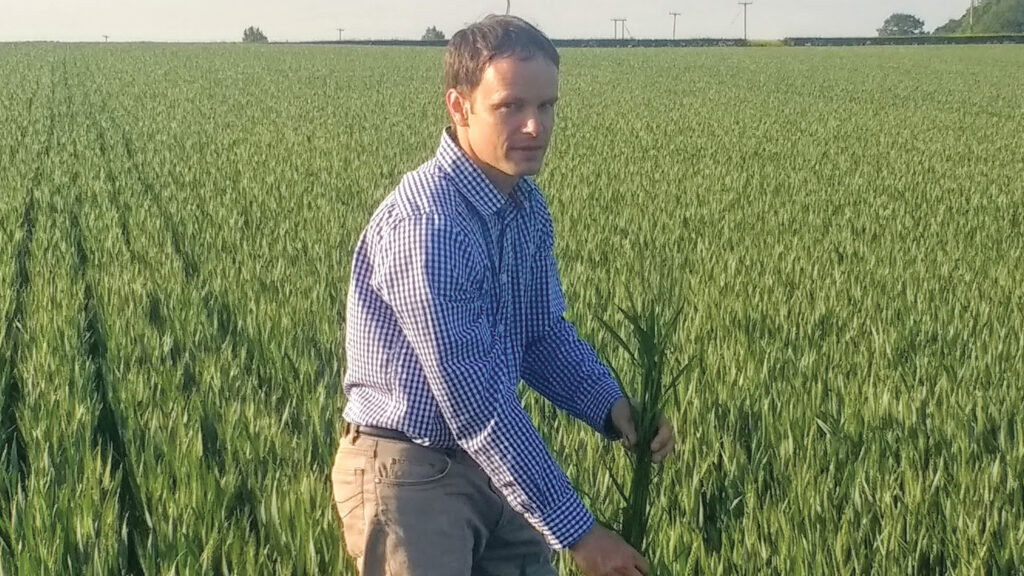How to maximise the benefits of stale seed-beds
 © Tim Scrivener
© Tim Scrivener Effective weed control between harvest and drilling is crucial to control yield-sapping grassweeds such as blackgrass, ryegrass and bromes.
Stale seed-beds are one of the main techniques used ahead of drilling autumn cereals.
The aim is to reduce the likelihood of weeds germinating in the crop, says Bayer technical manager Ben Giles.
See also: Grassweed control – sequencing and timing key in warmer winters
“Fewer weeds means in-crop herbicides and crop competition have a greater chance of managing those that remain, preserving yield potential.
“Sounds simple, but to be successful, weed control needs to work alongside preparing the ground for the next crop.”
The seed bank
Any field with a weed problem will have a fairly large seed bank, too. Even when there is a large flush of grassweeds, that is only a relatively small proportion of the total seed bank.
Many farms had fairly good weed control in 2024-25, but the size of the seed bank means problems can quickly build up again.
“We don’t recommend trying to exhaust a large seed bank through repeated stale seed-beds in one year,” says Ben.
“Biology is against you, plus the cost and risk of overworking the soil. Therefore, target having less disturbance at drilling than cultivation and try to drill after peak weed germination.”
Cultivation strategy
Every field is different, and weed control is just one of several reasons why you might need to cultivate, such as resolving compaction or incorporating organic manures.
If the main task is to control weeds and create tilth, then after a season with generally good control, move as little soil as possible.
“Keep cultivation shallow, say less than 50mm,” he says. “Deeper cultivation mixes seed within the soil profile, so weeds will germinate from different depths at different times, making them harder to control.”
Make sure the drilling pass disturbs less soil than the previous cultivation. That way it is less likely to kick more weed seed into life.
There will always be some germination, but there is less risk of a very large flush, so it is easier to control with the residual herbicide programme.
After harvest, one option is to go straight to the primary cultivation.
The alternative is a light surface action – a straw rake or roll – to prompt an initial chit which you then spray off before moving on to the primary cultivation.
It depends on when there is moisture and the planned drilling date. Make sure any residues are evenly spread across the field.
Ben points out that this strategy is for all main grassweeds. Previously, different cultivation strategies were recommended for different brome species, but this is no longer the case.
The seed-bed
Grassweeds germinate best in fine, firm, moist soil. Later in the season, a good seed-bed supports crop establishment and residual herbicide performance.
“Getting seed-bed preparation right sets up the whole season. Attention to detail is the main thing, farmers will know the characteristics of their own soil, but check and plan carefully before cultivating.
“Consistency across the field will help get an even flush of weeds.”
Don’t overlook the value of rolling in the right conditions. It increases seed-to-soil contact, breaks up clods and helps draw moisture to the surface, promoting weed germination.
Spraying off
“For wheat crops, plan for two treatments of Roundup with the main cultivation in between as a starting point,” says Ben.
“This is consistent with the Wrag [Weed Resistance Action Group] guidelines and is the best balance between workload, weed control and managing glyphosate resistance risk – which we all need to pay attention too.”
For blackgrass seedlings, use a rate of 540g/ha. If blackgrass has tillered, and for Italian ryegrass or bromes, up the rate to 720g/ha to ensure effective control.
Make sure your stale seed-bed applications work as well as possible. Don’t rush the job, and get your water volume, nozzle type, spray pressure and boom height spot-on.
Drilling
For maximum benefit from the stale seed-bed, aim to spray off then drill after the main flush of grassweeds, typically the second week of October.
After several sodden autumns in the past decade, many farmers understandably prefer to drill earlier, but this will increase weed pressure in the crop.
“Every week you delay drilling reduces the likely in-crop blackgrass pressure. Delaying improves control of Italian ryegrass, great and sterile brome too.
“For blackgrass, we would expect it to be a low dormancy year, which will help tip things in our favour.
“It’s about being pragmatic and balancing the risks. In the hunt to control weeds, don’t lose sight of having a well-established wheat crop.”
Any delay tends to help herbicide performance, thanks to cooler and moister conditions. Soil moisture helps soil actives reach the rooting zone and control weeds.
Cooler weather slows down degradation, so herbicides are effective for longer.
Ben says: “Proclus (aclonifen) plus a metribuzin co-form (such as flufenacet + diflufenican + metribuzin) is a strong start to the programme with a mixture of root and shoot activity.
“Aclonifen can cope with drier conditions but, if possible, wait for more soil moisture to support the other actives in the programme.”
Patience needed to wait for a full chit
Agronomist comment: Chris Tolley, farmer and AICC agronomist

Chris Tolley © Chris Tolley
While there are some potential savings by close attention to fertiliser rates and using varietal resistance to support pest and disease management, there is little scope to trim the cost of weed control.
If we take our foot off the gas and get a large seed return, it has a huge impact down the line.
We see from last year that the crops with a higher level of grassweeds were drilled earlier. But financial considerations will push some to drill earlier if they can.
Last autumn, it was dry for most of September followed by heavy rain which put drilling back until mid-October, which helped weed control.
Even then, patience was needed to wait for blackgrass to fully chit before spraying off. I saw farms last year where 10 October was too early for spraying off.
On the whole, the stronger pre-emergence programmes based on aclonifen or cinmethylin are doing a good job.
Longer term, increasing organic matter will make soils more resilient to cope with extremes in weather. I’m in regular conversations about how to improve workability and water retention.
Of course, increasing organic matter is not a quick process, but if you don’t start you will never make progress.

